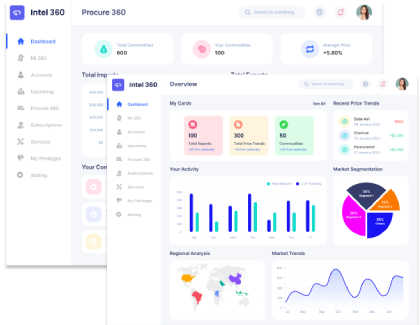Congenital heart disease (CHD) affects roughly 9% of babies. Around 20% of babies with congenital heart disease (CHD) have pulmonary valve or right ventricular outflow tract (RVOT) anomalies, such as tetralogy of Fallot, a single common arterial trunk, or pulmonary atresia. Surgical correction within the first month of life enhances the prognosis of this patient group. Transannular patch expansion, bioprosthetic valve implantation, and valved conduits are all surgical techniques for RVOT reconstruction. The acceptability of surgical intervention of the RVOT for complicated CHD varies with age and is tissue-dependent.
Multiple complications, however, including pulmonary regurgitation, self-growth, external ductal stenosis, valvular stenosis, ductal distortion, sternal compression, intimal hyperplasia, external ductal calcification, and aneurysm deformation, result in progressive RVOT dysfunction in these patients. As a result, they require recurring surgical operations throughout their lives. Despite the low death rate associated with surgical operations, complications are substantially more prevalent, particularly in patients undergoing several procedures. Transcatheter pulmonary valve replacement (TPVR) has appeared as a non-surgical, less invasive alternative treatment for RVOT failure. The goals of transcatheter pulmonary valve replacement are to replace the pulmonary valve without surgery and to minimise the number of cardiac procedures required over a patient's lifetime.
Bonhoeffer et al. performed the first transcatheter pulmonary valve replacement (TPVR) in 2000, and it is currently an approved treatment for severe pulmonary regurgitation/stenosis and RV-PA conduit failure. The three balloon-expandable valves utilised for malfunctioning RV-PA conduits are the Medtronic Melody valve, Edwards SAPIEN valve, and Meril Myval.
Medtronic, a world leader in the medical device business, has developed various transcatheter valve therapies. Medtronic has strategically positioned itself to dominate the transcatheter pulmonary valve (TPV) industry, however, its US revenues in the domain have remained stagnant, possibly because pulmonary regurgitation (PR) is frequently asymptomatic. In the past, PR has been addressed symptomatically, with valve repair or replacement seen as a last resort only.
SAPIEN 3, the latest generation of balloon-expandable transcatheter heart valves, is designed to overcome certain limitations of previous generation transcatheter heart valves. Recent trials involving SAPIEN 3 indicate very low rates of vascular complications and paravalvular regurgitation, and lower rates of stroke and mortality as compared to surgical aortic valve replacement (SAVR) in patients with moderate to high surgical risk.
Clearly, firms are striving to offer increasingly sophisticated and efficient TPVs through advancements in technology.
In 2021, doctors from The Department of Cardiology, PGIMER, performed a successful TPVR for the first time in North India. However, TPVR remains a costly alternative and in countries like India, many people might be unable to afford the treatment.
Read more about this report - REQUEST FREE SAMPLE COPY IN PDF
Key Findings of the Report:
- Advancements in technology enabling easier implants, growing population with obesity and conditions that may require TPV replacement, and growing demand for less invasive procedures are expected to drive the market.
- USA and Europe are expected to be key markets.
- In countries like India, TPVR is a costly alternative, and might be unaffordable for a sizeable population.
Market Analysis by Technology, End-use, Application, Raw Material and Region:
- By technology, the market is classified into Balloon-Expanded Transcatheter Valve and Self-Expanded Transcatheter Valve.
- By end-use, the market is segmented into Adult and Pediatric.
- By application, the industry is divided into Cardiac Anomaly, Pulmonary Atresia, Pulmonary Stenosis, Pulmonary Regurgitation, Tetralogy of Fallot, Truncus Arteriosus, and Others.
- On the basis of raw material, the industry is segmented into Synthetic and Tissue Engineered.
- By region, the market is classified into North America, Europe, Asia Pacific, Latin America and Middle East and Africa.
About Us
Expert Market Research (EMR) is a leading market research and business intelligence company, ensuring its clients remain at the vanguard of their industries by providing them with exhaustive and actionable market data through its syndicated and custom market reports, covering over 15 major industry domains. The company's expansive and ever-growing database of reports, which are constantly updated, includes reports from industry verticals like chemicals and materials, food and beverages, energy and mining, technology and media, consumer goods, pharmaceuticals, agriculture, and packaging.
EMR leverages its state-of-the-art technological and analytical tools, along with the expertise of its highly skilled team of over 100 analysts and more than 3000 consultants, to help its clients, ranging from Fortune 1000 companies to small and medium sized enterprises, easily grasp the expansive industry data and help them in formulating market and business strategies, which ensure that they remain ahead of the curve.
Contact Us
Expert Market Research
Website: www.expertmarketresearch.com
Email: [email protected]
US & Canada Phone no: +1-415-325-5166
UK Phone no: +44-702-402-5790













